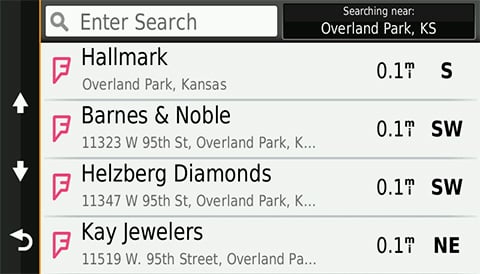

- #Delormed street atlas 2015 add avoidance drivers#
- #Delormed street atlas 2015 add avoidance series#
Google Earth Engine: planetary-scale geospatial analysis for everyone. A note on two problems in connexion with graphs. The effect of malaria control on Plasmodium falciparum in Africa between 20. Predicting the risk of avian influenza A H7N9 infection in live-poultry markets across Asia. Trading more food: implications for land use, greenhouse gas emissions, and the food system. multiple use protected areas in reducing tropical forest fires: a global analysis using matching methods. (Joint Research Centre of the European Commission, 2016) GHS settlement grid following the REGIO model 2014 in application to GHSL landsat and CIESIN GPW v4-multitemporal (1975–1990–2000–2015) Data Sets.
#Delormed street atlas 2015 add avoidance drivers#
Drivers of household food availability in sub-Saharan Africa based on big data from small farms. Urban–rural differentials in child malnutrition: trends and socioeconomic correlates in sub-Saharan Africa. Inequality, the urban–rural gap and migration.

(Global Environment Monitoring Unit, Joint Research Centre of the European Commission, 2008) Travel time to major cities: a global map of accessibility. (United Nations Department of Economic and Social Affairs, 2015)

Transforming our World: The 2030 Agenda for Sustainable Development. By further triangulating this map against socioeconomic datasets, we demonstrate how access to urban centres stratifies the economic, educational, and health status of humanity. Our results highlight disparities in accessibility relative to wealth as 50.9% of individuals living in low-income settings (concentrated in sub-Saharan Africa) reside within an hour of a city compared to 90.7% of individuals in high-income settings. Here we develop and validate a map that quantifies travel time to cities for 2015 at a spatial resolution of approximately one by one kilometre by integrating ten global-scale surfaces that characterize factors affecting human movement rates and 13,840 high-density urban centres within an established geospatial-modelling framework. In parallel, new data sources provided by Open Street Map and Google now capture transportation networks with unprecedented detail and precision. The only previous attempt to reliably map accessibility worldwide, which was published nearly a decade ago 2, predated the baseline for the Sustainable Development Goals and excluded the recent expansion in infrastructure networks, particularly in lower-resource settings. This has renewed international efforts to accurately measure accessibility and generate a metric that can inform the design and implementation of development policies. Advancing accessibility worldwide underpins the equity agenda of ‘leaving no one behind’ established by the Sustainable Development Goals of the United Nations 1. Poor access to opportunities and services offered by urban centres (a function of distance, transport infrastructure, and the spatial distribution of cities) is a major barrier to improved livelihoods and overall development. These findings indicate that the lower recognition performance in participants with higher PTSD symptom severity is associated with altered cortical activity in brain regions that are known to play a role in the elaboration on visual cues that supports recollection.The economic and man-made resources that sustain human wellbeing are not distributed evenly across the world, but are instead heavily concentrated in cities. During the recognition session, higher PCL-5 scores were associated with reduced relative power of the evoked response to original images from 100 ms to 300 ms following the image onset over a distributed brain network including the bilateral inferior frontal gyri, left middle frontal gyrus, left supramarginal gyrus, right precuneus and the bilateral superior temporal gyri. PCL-5 scores were negatively correlated with discrimination performance and with the recognition accuracy for original images.

In a subsequent session, the original images were shown intermixed with novel images while participants performed the recognition task.
#Delormed street atlas 2015 add avoidance series#
In an initial study session, participants were presented with a series of images of outdoor scenes and were instructed to study the images for an upcoming recognition test. We recorded magnetoencephalography data during a visual recognition task in participants with combat exposure (n = 40, age: 41.2 ± 7.2 years) to investigate the relationship between the evoked brain activity, behavioral performance, and the severity of their post-traumatic stress symptoms assessed using the PTSD Check List for DSM V version (PCL-5).


 0 kommentar(er)
0 kommentar(er)
